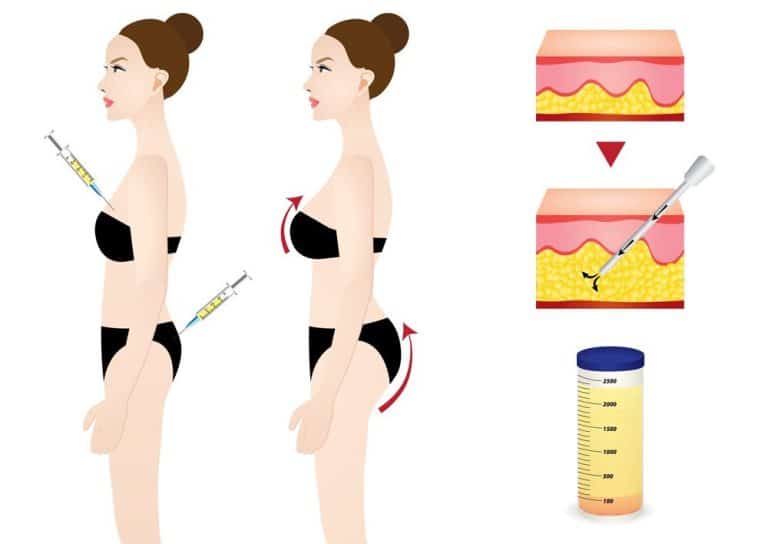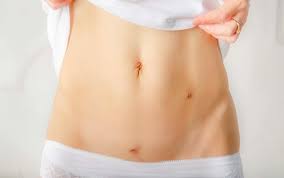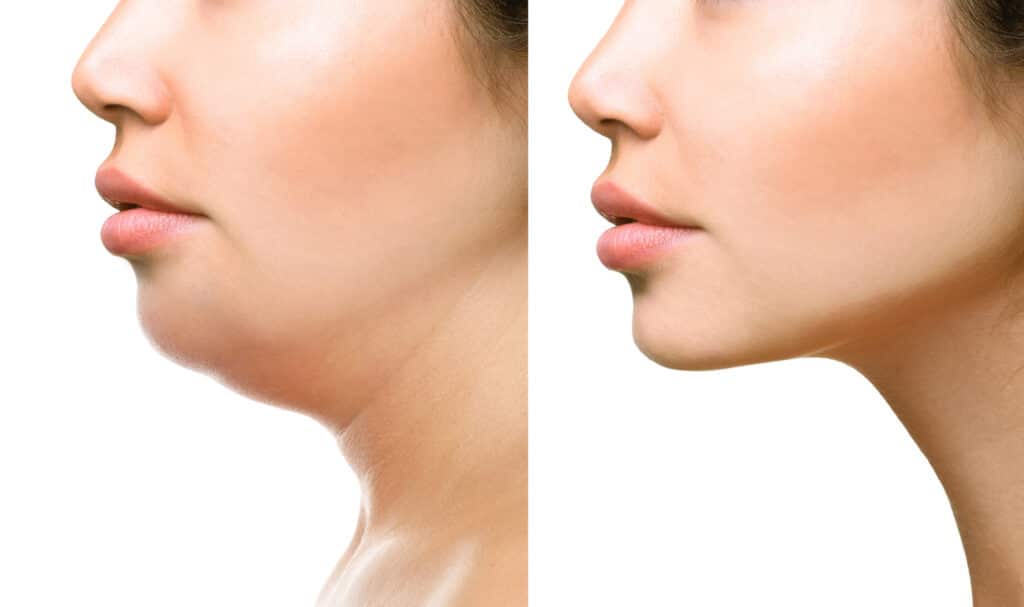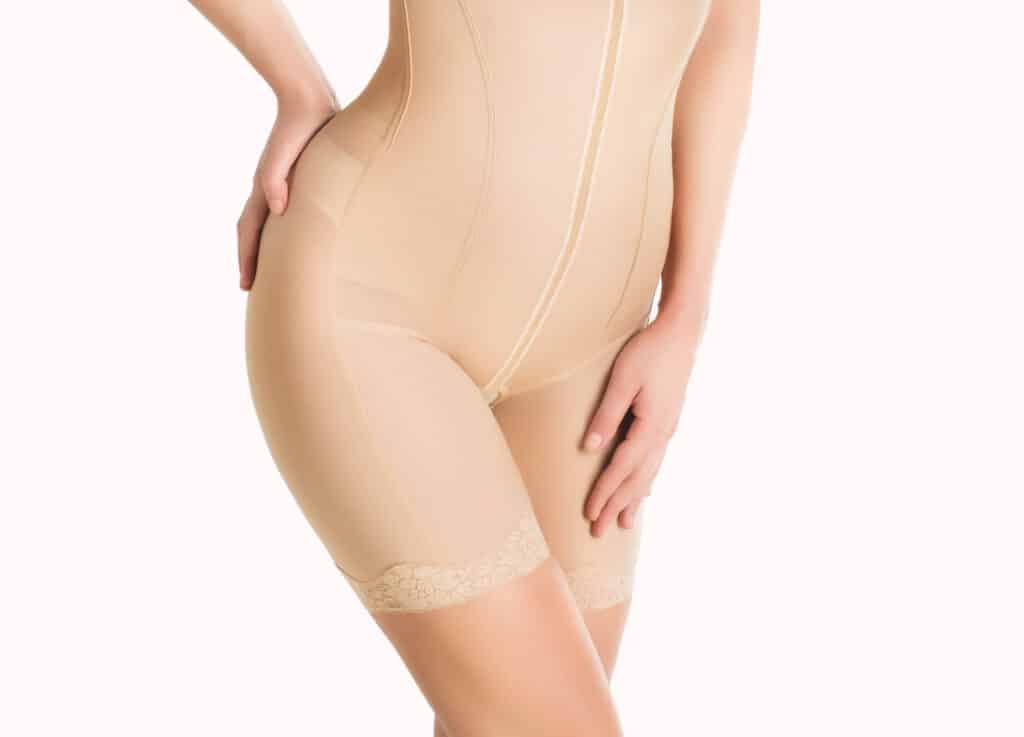Did you know that nearly 3% of people suffer from axillary hyperhidrosis, a condition causing excessive sweating, as noted in case reports, and that additional liposuction or thermal liposuction may be considered, according to the pubmed disclaimer liposuction? This can lead to embarrassment and discomfort in daily life. Liposuction for axillary hyperhidrosis offers a solution. It targets the sweat glands in the underarm area, providing long-lasting relief. Many patients report feeling more confident and comfortable after the procedure.
This treatment not only reduces sweat but also improves skin texture. It’s a game-changer for those tired of constant moisture and stained clothing. Understanding the benefits, case reports, and process of liposuction for axillary hyperhidrosis can help you decide if this is the right choice for you, especially considering the potential for relapse. Say goodbye to sweat stains and hello to a fresher, drier lifestyle.
Key Takeaways
- Liposuction can be an effective treatment for axillary hyperhidrosis, significantly reducing excessive sweating in the underarm area.
- Before considering the procedure, consult a qualified healthcare provider to discuss your specific condition and treatment options.
- Understand the steps involved in the liposuction procedure and the recovery process to prepare yourself mentally and physically.
- Be aware of potential risks, such as infection or scarring, and weigh these against the benefits of reduced sweating.
- Review research and studies that highlight the effectiveness of liposuction for hyperhidrosis to make an informed decision.
- Consider patient testimonials to gain insight into real-life experiences and outcomes from individuals who have undergone the procedure.
Understanding Axillary Hyperhidrosis
Definition
Axillary hyperhidrosis refers to excessive sweating localized to the underarm area, with additional liposuction mentioned in case reports and a pubmed disclaimer liposuction. This condition affects many people worldwide. It can cause discomfort and embarrassment in social situations.
Daily Life Impact
Hyperhidrosis patients often face challenges in daily life. The excessive underarm sweating can lead to anxiety and low self-esteem. Many individuals avoid social gatherings due to fear of sweat stains or odor. Clothes can become soaked quickly, leading to constant changes throughout the day.
Emotional struggles are common among those with axillary hyperhidrosis. Feelings of isolation may arise from the condition. People might feel judged by others, affecting their confidence. This emotional burden can be just as significant as the physical symptoms.
Non-Surgical Treatments
Several non-surgical treatments exist for axillary hyperhidrosis. Antiperspirants are a popular first step. Over-the-counter options contain aluminum chloride, which blocks sweat glands. Prescription-strength antiperspirants offer stronger protection for those who need it.
Botox injections also serve as an effective treatment for excessive sweating. Botox works by blocking the nerves that trigger sweat glands. Patients often experience reduced sweating for several months after treatment.
Other options include iontophoresis, which uses electrical currents to reduce sweating, and oral medications that decrease sweating overall. These methods can help manage symptoms but may not work for everyone.
Compensatory Hyperhidrosis
Compensatory hyperhidrosis is another concern for some patients. After undergoing treatment, some may experience increased sweating in other body areas. This phenomenon occurs because the body tries to maintain balance after reducing sweat production in the underarms.
Patients should discuss this possibility with their healthcare provider before starting treatment. Understanding these potential outcomes helps manage expectations and plan accordingly.
Seeking Help
The International Hyperhidrosis Society provides valuable resources for individuals suffering from excessive sweating. They offer information on treatments and support networks for those affected by hyperhidrosis.
Seeking medical advice is essential for anyone experiencing axillary hyperhidrosis. A healthcare professional can provide tailored recommendations based on individual needs. Early intervention often leads to better management of symptoms.
What is Liposuction
Liposuction is a cosmetic procedure designed to remove fat deposits from various parts of the body. This technique has gained popularity for its ability to reshape and contour areas that may not respond well to diet and exercise.
Traditionally, liposuction targets areas like the abdomen, thighs, and arms. Surgeons use a specialized tool called a liposuction tube or cannula to extract unwanted fat. They insert this tube through small incisions in the skin. The process allows for precise removal of fat while minimizing damage to surrounding tissues.
Liposuction Techniques
Several liposuction techniques exist today. Each offers unique advantages depending on the patient’s needs. For example, thermal liposuction uses heat to liquefy fat, making it easier to remove. This method can lead to less bruising and quicker recovery times.
Another common method is tumescent liposuction. It involves injecting a saline solution mixed with anesthetic into the treatment area. This solution helps reduce pain and bleeding during the procedure. Surgeons often prefer this technique for its effectiveness and safety.
Axillary Liposuction
Axillary liposuction specifically addresses fat in the underarm area. This approach can help individuals suffering from axillary hyperhidrosis, which causes excessive sweating. By removing excess fat, patients may experience improved comfort and reduced sweating episodes.
Surgeons utilize special liposuction cannulae for this procedure. These tools allow for greater control and precision when targeting small areas like the axilla (underarm). The result is a more streamlined appearance and potentially less discomfort from friction caused by excess fat.
Additional Liposuction Applications
Beyond cosmetic improvements, liposuction has adapted for treating conditions unrelated to aesthetic desires. Some patients seek this procedure for medical reasons, such as lymphedema or lipodystrophy. In these cases, doctors may perform additional liposuction to alleviate symptoms related to these conditions.
Research supports these adaptations. A study published in PubMed highlights successful outcomes when using liposuction for medical issues. The findings show that patients benefit significantly from fat removal in terms of both physical health and emotional well-being.
Liposuction for Hyperhidrosis
Targeting Glands
Liposuction effectively targets sweat glands in the axillary region. This area often suffers from excessive sweating known as hyperhidrosis. The procedure involves removing fat and sweat glands through small incisions. Surgeons use a special technique called the suction sweat gland method. This method focuses on the specific glands that cause excessive sweating.
Patients can experience significant sweat reduction rates after undergoing this procedure. Many report a drastic decrease in underarm sweating. The results can lead to improved comfort and confidence.
Tumescent Anesthesia
Tumescent anesthesia plays a crucial role during the procedure. It minimizes discomfort by numbing the area before surgery begins. Surgeons inject a solution containing lidocaine and epinephrine into the treatment area. This solution helps reduce bleeding and swelling, making the procedure safer and more comfortable.
Patients often feel little to no pain during the operation. They can remain awake while receiving treatment. This type of anesthesia allows for a quicker recovery time, which many patients appreciate.
Outpatient Procedure
Liposuction for hyperhidrosis is typically an outpatient procedure. Patients do not need to stay overnight in a hospital. After surgery, they can return home on the same day. This aspect makes it convenient for those with busy schedules.
The whole process usually takes about one to two hours, depending on the extent of treatment. Recovery is straightforward, with most people resuming normal activities within a few days.
Alternative Treatments
While liposuction is effective, other options exist for treating hyperhidrosis. Some patients consider sweating injections such as Botox or similar products. These injections temporarily block nerve signals to the sweat glands. They can provide relief but may require repeat treatments every few months.
Another alternative includes prescription antiperspirants that contain aluminum chloride. These products can be effective for mild cases of hyperhidrosis but may not work for everyone.
Effectiveness of the Procedure
Long-Term Results
Patients often seek liposuction for axillary hyperhidrosis to manage excessive sweating. Studies show that 6 out of 10 patients experience long-term remission from this condition after the procedure. This means they enjoy a significant reduction in sweating in their underarms.
The results can vary widely among individuals. Some patients report complete relief, while others may still experience some sweating. The effectiveness of the procedure depends on various factors, including the severity of hyperhidrosis and individual body responses.
Need for Additional Procedures
Not all patients achieve permanent results. Some individuals may require additional procedures due to a relapse of symptoms. This can happen when the remaining sweat glands become overactive again.
Patients should discuss potential outcomes with their doctor before the procedure. Understanding that some may need follow-up treatments is essential for setting realistic expectations.
Variability in Outcomes
The duration of remission varies significantly among patients. For some, remission lasts up to 7 years, providing a long break from symptoms. Others might find their sweating returns sooner.
Factors influencing these outcomes include genetics and lifestyle choices. Patients must consider these elements when evaluating the procedure’s effectiveness.
In summary, liposuction for axillary hyperhidrosis offers promising results for many patients. However, outcomes can differ based on individual circumstances. It is crucial for anyone considering this option to have a thorough discussion with their healthcare provider about what to expect.
Procedure Steps and Recovery
Anesthesia Administration
The first step in liposuction for axillary hyperhidrosis is anesthesia administration. Surgeons typically use local anesthesia. This numbs the area under treatment. In some cases, sedation may be offered to help the patient relax. Patients should discuss their preferences with the surgeon beforehand.
Small Incisions
After anesthesia takes effect, the surgeon makes small incisions in the armpit area. These incisions are usually less than half an inch long. Their size helps minimize scarring. The surgeon carefully places these incisions in discreet locations. This ensures that any visible scars will be minimal.
Gland Removal via Suction
Next, the surgeon removes the sweat glands using a suction technique. A thin tube called a cannula is inserted through the incisions. This device gently breaks up the tissue containing the glands. The suction then extracts them from the body. Most patients experience significant relief from excessive sweating after this step.
Recovery Time
Recovery time varies for each patient but generally takes about one week. Most individuals can return to normal activities within a few days. However, full recovery may take longer depending on individual health factors.
Post-Procedure Care Instructions
Post-procedure care is crucial for optimal recovery. Patients should keep the incisions clean and dry to prevent infection. Applying ice packs can help reduce swelling and discomfort during the first few days. It’s important to follow all instructions provided by the surgeon.
Avoid strenuous activities for at least two weeks post-surgery. Heavy lifting or intense workouts can strain healing tissues. Patients should also schedule follow-up appointments to monitor their healing process.
Minimal Downtime
One of the benefits of liposuction for axillary hyperhidrosis is minimal downtime. Many patients feel comfortable resuming light activities shortly after surgery. This quick recovery allows individuals to return to work or daily routines without significant interruption.
However, some people may experience temporary side effects such as bruising or swelling. These symptoms usually resolve within a few weeks.
Patients should remember that while liposuction significantly reduces sweating, it does not guarantee permanent results. Some individuals may experience relapse over time, requiring additional treatments.
Potential Risks and Considerations
Complications
Liposuction for axillary hyperhidrosis carries several potential complications. Common issues include bruising and temporary swelling at the treatment site. These symptoms usually resolve within a few weeks. However, some patients may experience more serious complications, such as infection or blood clots.
Pain is another possibility after the procedure. Patients might feel discomfort as the anesthesia wears off. Some may also notice changes in skin sensation around the treated area. These feelings can vary from numbness to heightened sensitivity.
Relapse Possibility
Another important consideration is the possibility of hyperhidrosis relapse. While liposuction can significantly reduce sweating, it does not guarantee permanent results. Some individuals may find that their symptoms return over time. This can lead to the need for further treatments or procedures in the future.
Research indicates that about 10-20% of patients experience a return of symptoms after treatment. Factors contributing to this can include genetics and lifestyle choices. Understanding this risk is crucial for anyone considering the procedure.
Consultation Importance
Consultation with a qualified dermatologist or surgeon is essential before proceeding with liposuction for axillary hyperhidrosis. A professional can assess individual cases and determine if this treatment is suitable. They will evaluate medical history, skin type, and overall health.
During the consultation, patients should discuss their expectations and concerns. Surgeons will explain the procedure, recovery process, and potential complications in detail. This dialogue helps set realistic goals for treatment outcomes.
Patients should also inquire about alternative treatments available for hyperhidrosis. Options such as Botox injections or prescription antiperspirants may be recommended instead of surgery. Each method has its own risks and benefits that should be weighed carefully.
In summary, understanding the potential risks associated with liposuction for axillary hyperhidrosis is vital. Complications like bruising and swelling are common but manageable. The chance of relapse highlights the importance of setting realistic expectations. Consulting with a qualified expert ensures a thorough evaluation of personal suitability for this procedure.
Research and Studies Overview
Comparison with Other Treatments
Several studies have compared liposuction to other surgical treatments for axillary hyperhidrosis. One notable study published in the Journal of Plastic Surgery in 2016 showed that liposuction significantly reduced sweat production compared to traditional excision methods. The researchers found that patients experienced a marked decrease in sweating after the procedure.
In another study from 2019, researchers evaluated the outcomes of liposuction versus endoscopic thoracic sympathectomy (ETS). They reported that while ETS can effectively reduce sweating, it carries higher risks of complications. Liposuction presented fewer side effects and a quicker recovery time. This evidence suggests that liposuction may be a safer option for many patients.
Combined Techniques
Research also indicates that combining liposuction with other techniques can enhance results. A study conducted in 2020 explored the effectiveness of combining liposuction with microwave ablation. The findings revealed that this combination provided better outcomes in reducing axillary sweat than either method alone. Patients noted improved satisfaction levels post-treatment.
e experts propose using liposuction alongside botulinum toxin injections. This approach allows for immediate sweat reduction while addressing long-term concerns. Studies show that patients who received both treatments reported longer-lasting results and improved quality of life.
Ongoing Research
Ongoing research continues to explore ways to improve procedural outcomes and patient satisfaction. Current studies focus on refining techniques to minimize discomfort during and after the procedure. Researchers are testing new tools like ultrasound-assisted liposuction to enhance precision and reduce recovery times.
A clinical trial initiated in 2021 aims to evaluate the long-term effects of liposuction on axillary hyperhidrosis. Researchers will track patient satisfaction and sweat reduction over five years. Preliminary results indicate promising trends in efficacy and safety.
Furthermore, experts are investigating the psychological impacts of hyperhidrosis and its treatment. Understanding how successful procedures affect mental health is crucial. Improved emotional well-being can lead to better overall satisfaction with treatment outcomes.
Overall, the body of research supports the effectiveness of liposuction for treating axillary hyperhidrosis. Its advantages over traditional methods shine through various studies. Continued exploration into combined techniques and innovative approaches may pave the way for even better solutions.
Patient Experiences and Testimonials
Positive Outcomes
Many patients report significant relief from axillary hyperhidrosis after undergoing liposuction. One patient shared their experience, stating they felt a huge weight lifted off their shoulders. They no longer worried about embarrassing sweat stains during important meetings. Another patient noted that simple activities like going to the gym became enjoyable again. They expressed gratitude for the freedom from excessive sweating.
Case reports highlight similar experiences. For instance, a study published in 2020 documented several patients who achieved remarkable results. These individuals experienced a noticeable reduction in underarm sweating after the procedure. Most reported a satisfaction rate of over 90%.
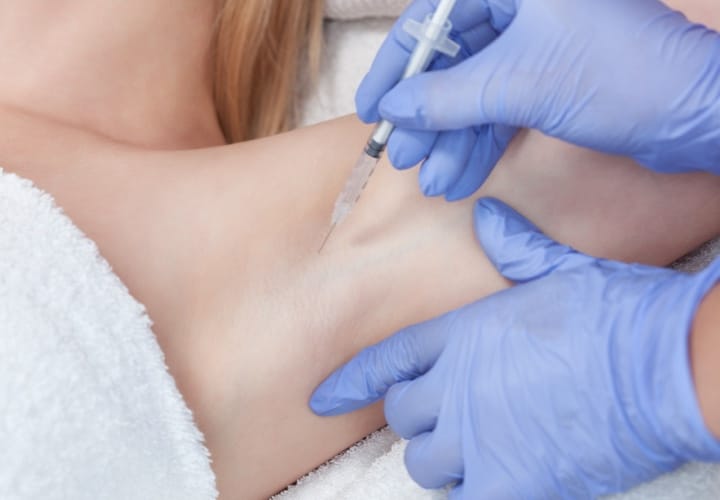
Multiple Treatments
e patients, however, face challenges with relapse. A few underwent multiple treatments before finding lasting relief. One patient described how they initially felt hopeful after the first procedure. Unfortunately, symptoms returned within months. After a second treatment, they finally found success. This persistence paid off, as they now enjoy life without the constant worry of sweat.
Another case report detailed a patient who had three procedures over five years. Each time, they noticed improvement but also some return of symptoms. This individual emphasized the importance of managing expectations. They stated that while liposuction significantly helped, it might not be a permanent fix for everyone.
Satisfaction with Simplicity
Patients appreciate the simplicity of the liposuction procedure itself. Many describe it as straightforward and less invasive than expected. The recovery time is often quick, allowing them to return to daily activities soon after treatment. One patient mentioned how they were back at work within just a few days.
Feedback on the results is overwhelmingly positive. Patients feel more confident in social situations and have improved self-esteem. They report enjoying activities that previously caused anxiety due to sweating.
A common theme among testimonials is the emotional relief that comes with successful treatment. Patients express feelings of liberation from their condition. They no longer feel defined by their hyperhidrosis.
Overall, these personal accounts illustrate the potential benefits of liposuction for axillary hyperhidrosis. While some may require multiple treatments, many find significant improvement and satisfaction with their results.
Final Remarks
Liposuction for axillary hyperhidrosis can be a game-changer. It addresses excessive sweating effectively, giving you the freedom to wear what you want without worry. The procedure shows promising results, and many patients report significant improvements in their quality of life. Understanding the steps, recovery, and potential risks is crucial for making an informed decision.
If you’re tired of dealing with hyperhidrosis and looking for a lasting solution, consider consulting a qualified professional. They can guide you through your options and help you decide if liposuction is right for you. Don’t let sweat hold you back any longer—take the first step toward confidence today!
Frequently Asked Questions
What is axillary hyperhidrosis?
Axillary hyperhidrosis is a medical condition characterized by excessive sweating in the underarm area. It can cause discomfort and embarrassment, impacting daily activities and self-esteem.
How does liposuction help with hyperhidrosis?
Liposuction removes fat and sweat glands from the armpits, reducing sweating significantly. This procedure can provide long-lasting relief for those struggling with excessive underarm perspiration.
Is liposuction for hyperhidrosis safe?
Yes, liposuction is generally considered safe when performed by a qualified surgeon. However, like any surgery, it carries risks, including infection and complications.
What is the recovery time after liposuction for hyperhidrosis?
Most patients can return to normal activities within a week. Full recovery may take several weeks, depending on individual healing and adherence to post-operative care instructions.
Are there any side effects of this procedure?
Common side effects include swelling, bruising, and temporary discomfort. Serious complications are rare but can occur; consult your surgeon for personalized advice.
How effective is liposuction for treating axillary hyperhidrosis?
Studies show that liposuction can significantly reduce sweating in the underarm area. Many patients experience improved quality of life post-procedure.
Can I combine liposuction with other treatments for hyperhidrosis?
Yes, combining liposuction with treatments like Botox injections or medications may enhance results. Consult your healthcare provider to discuss the best approach for your needs.

